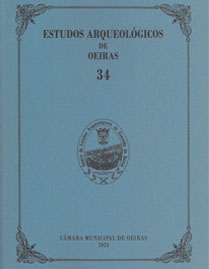A necrópole da gruta da Verdelha dos Ruivos (Vila Franca de Xira) e a génese do Complexo Campaniforme na região da foz do Tejo (Portugal)
DOI: 10.5281/zenodo.12732059
Mots-clés :
necropolis, Verdelha dos Ruivos cave, Bell Beaker Complex, Chronology, Tagus estuaryRésumé
The Verdelha dos Ruivos cave, located around 20 km NNE of Lisbon, is the only necropolis of the Bell Beaker Complex identified in Portugal to date in which it was possible to isolate in a stratigraphic sequence, single burials and reconstruct the original position of the corpses.
The cave was occasionally identified in 1973, during the inspection of a Cretaceous limestone quarry, whose exploration front sectioned the cavity, leaving only the distal part of it.
The excavation was carried out by a team from the Geological Service of Portugal led by O. da Veiga Ferreira, which included a medicine doctor, which constituted an obvious added value for characterizing the composition of the population and knowledge of the methods of inhumation used.
The small crypt that remained of the primitive natural cavity, whose brown filling contrasted with the color of the limestone, was completely emptied by an hardened carbonate breccia, with abundant limestone blocks, containing archaeological remains. The hardness of this very consolidated filling made it difficult to carry out the excavation, which began in October 1973 and ended only in May 1974.
Three main levels were identified, consisting of successive individual tombs in dorsal decubitus, on the left or right side, with the body retracted, in the uterine position. It was possible to identify the position of 11 graves, some related with limestone slabs, which constituted the base or covering of the graves.
The archaeological remains included all the items considered characteristic of Bell Beaker Complex: sperm whale tooth buttons, gold spirals, a Palmela point, a fragment of a wristguard and ceramics, of which the decorated ones belong exclusively to the Bell Beker Complex, which leads to the conclusion that the funerary use of the cave is exclusively from a community related to this cultural “circle”.
The absolute dating carried out allowed us to place the beginning of this necropolis between 2700 and 2600 years BC, extending into the second half of the 3rd millennium BC. These results are consistent with the antiquity of the emergence of the Bell Beaker Complex in the Tagus estuary region, as was demonstrated by the results obtained at the prehistoric settlement of Leceia, located approximately 30 km to the SW, a reality that will be also valued and discussed.
Téléchargements
Publiée
Comment citer
Numéro
Rubrique
Licence
Os artigos publicados são da exclusiva responsabilidade dos Autores.
É expressamente proibida a reprodução de quaisquer imagens sobre as quais
existam direitos de autor sem o prévio consentimento dos signatários dos artigos
respectivos.




